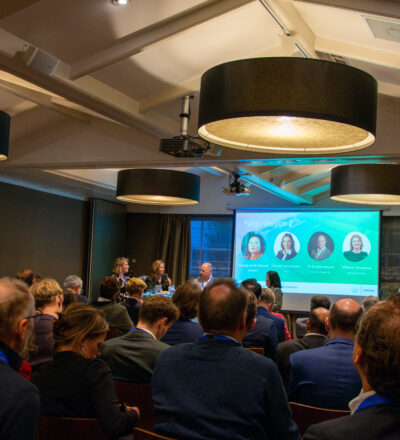What role will green hydrogen play in the clean energy transition in the Netherlands? What challenges is the industry currently facing? How can we help solve these issues, stimulate investments, and take hydrogen to the next level? During the ISPT Hydrogen Conference 2023, experts and stakeholders from various sectors came together to discuss possible answers to these questions.
On the 1st of November 2023, over sixty professionals from various backgrounds gathered in the Soester Duinen to participate in the ISPT Hydrogen Conference. They came together to exchange ideas, share experiences, and learn about recent developments in an important part of the energy transition: green hydrogen.
The day began with a dedicated Hydrohub Innovation Program meeting in the morning, involving program partners. In the afternoon, an open conference featured multiple panels of experts and plenary discussions. ISPT strove to provide attendees with a clear view of where we currently stand, where we need to go and how we will get there.
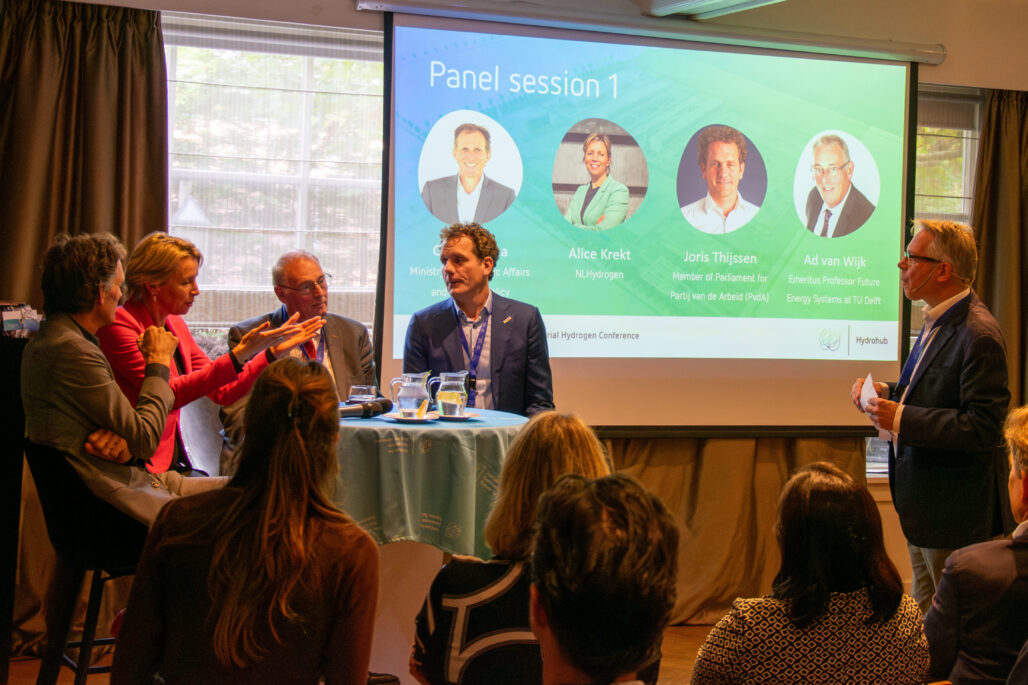
Moderator Jörg Gigler (TKI New Gas) took care of a lively and active debate between the audience and our speakers:
- Joris Thijssen (Member of Parliament PvdA/GroenLinks)
- Alice Krekt (Director NLHydrogen)
- Nicole Vermeulen (Chief Industrial Officer Hy24)
- Afkenel Schipstra (Head of Hydrogen Uniper Benelux)
- Hyung-Ja de Zeeuw (Senior Energy Transition Specialist Hydrogen, Executive Director Rabobank)
- Gijs Postma (Member MT Directorate Climate and Energy Ministry of Economic Affairs and Climate Policy)
- Ad van Wijk (Emeritus Professor Future Energy Systems TU Delft)
- Ed Buddenbaum (Program Manager GroenvermogenNL)
- Tjeerd Jongsma (Director ISPT)
- Andreas ten Cate (Program Director ISPT)
Hydrohub Innovation Program and real-world developments
Reminiscent of the energy transition itself, it’s up to the innovators to kick things off in the morning session on November 1st. As Hydrohub Innovation Program partners, they are enthusiastic about the innovation potential of the MegaWatt Test Centre and HyScaling project. Innovators agree that green hydrogen innovation and research in the Netherlands has great potential to establish a strong position for Dutch manufacturing industries in the production of electrolysers. Two arguments in favour of domestic production of green hydrogen are The Netherlands’ offshore wind power – which can provide renewable electricity for electrolysers – and its industrial sector, which can use H2 as feedstock and power source.
Unfortunately, developers also face a plethora of obstacles. Firstly, the first generation of large hydrogen plants are bespoke, resulting in high development costs. Inflation, rising electricity prices and timing and costs of the necessary infrastructure development all lead to investment ratio problems and setbacks for the industry. It will be crucial to speed up the learning curve and find ways to reduce project costs. Going forward, we will need to force upscaling into projects on the 100+MW scale. Developers also stress the importance of innovating electrolyser plant designs. To bring down costs quickly, moving into modular designs is essential. “Modularity is key. In cars, every part is standardized. We need that kind of expertise”, says a representative of Shell.
The afternoon program of the Conference has two moderated panels in store; the first is on policy, the second is on financial investments. Tjeerd Jongsma, Director of ISPT, sets the stage. “The transition into a circular economy will take place in Europe. Hydrogen is part of the solution, but not the only solution. We will import H2 in the Netherlands with an import-production distribution of 80/20 rather than 50/50.”
Domestic hydrogen policy towards a European hydrogen hub
The future of hydrogen in the Netherlands depends upon a clear and supportive, legislative and regulatory framework and supporting policies. The EU is heavily investing in hydrogen as part of its Green Deal-ambition. Yet for developing a strong hydrogen ecosystem, a conducive domestic policy remains the deciding factor. Gijs Postma, Member MT Directorate Climate and Energy Ministry of Economic Affairs and Climate Policy, sheds light on current Dutch hydrogen policies. The ministry’s aim is for the Netherlands to become the hydrogen hub in north-western Europe by leveraging existing gas pipelines and ports, while simultaneously enhancing the development of hydrogen infrastructure, the domestic hydrogen production and import.
The NL Climate Accord of 2020 revealed ambitions to develop a national hydrogen infrastructure, stimulate hydrogen innovation and realize 3 to 4 GW electrolyser capacity in the Netherlands by 2030. Concerns over dependency on foreign suppliers and sufficient green hydrogen supply are the main reasons to stimulate local production. Scaling up electrolysis capacity remains a big challenge, which is reflected in the substantial policy budget.
Furthermore, companies express a need for uniform safety standards and clear policy frameworks. With current understanding of the complexity of developing green hydrogen projects, the Dutch green hydrogen goal of 4GW in 2030 is perceived as ambitious to achieve. The prevailing opinion is that blue hydrogen can pave the way for green hydrogen. The EU Green Deal now also couples blue and green hydrogen through regulations. The development pace of each is slowly unfolding and needs to accelerate. “The battle is against other energy carriers, not between methods of H2 production”, according to one of the participants.
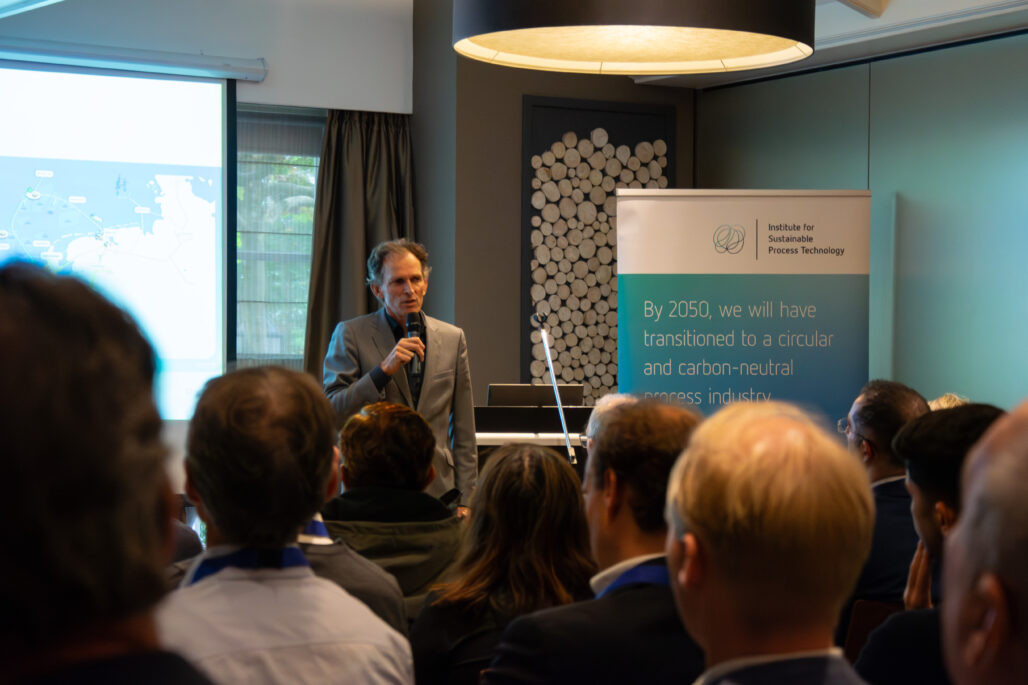
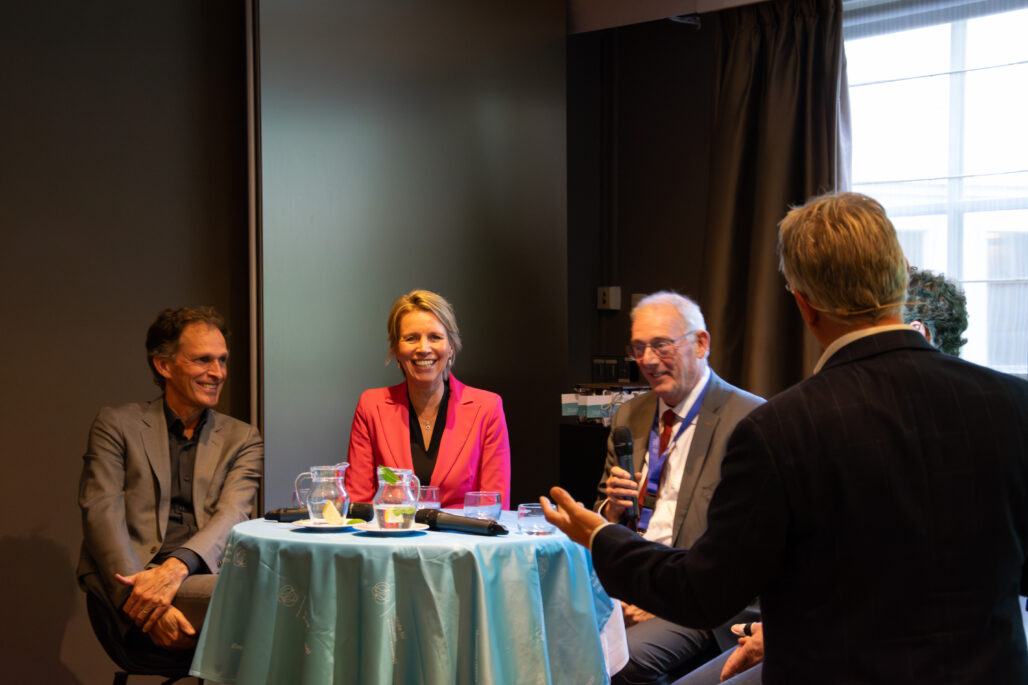
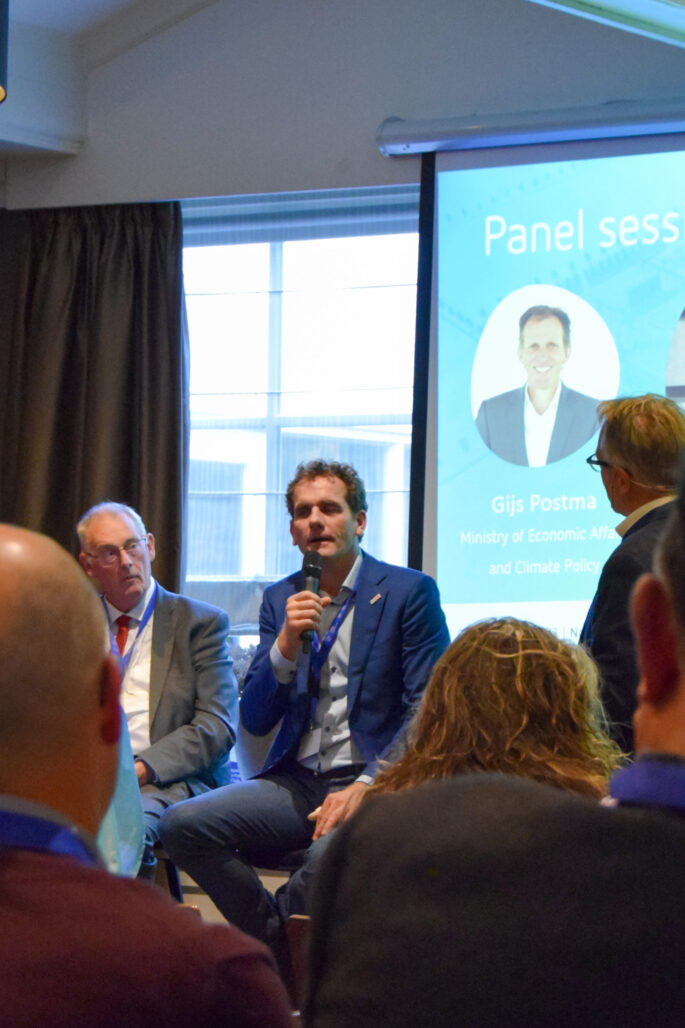
Blue or green hydrogen?
Although green hydrogen remains in short supply, the same cannot be said for blue hydrogen. In blue hydrogen production, over 90% of CO2 emissions could be captured and stored underground. “Blue hydrogen is necessary to ensure a sufficient supply and stimulate the hydrogen economy in the short term,” says Alice Krekt, director of NLHydrogen. Joris Thijssen, member of parliament PvdA/Groenlinks, is more hesitant. “There is no way to ensure that the infrastructure for transporting blue hydrogen will be converted to transporting green hydrogen in ten years’ time. There is also a risk that industries will use CCS as an excuse to delay transitioning away from fossil fuels.”
Ad van Wijk, Emeritus Professor of Future Energy Systems, sees the merits of both blue and green hydrogen. “I’m certainly in favour of green hydrogen, but let’s also look at turquoise and blue hydrogen. Good is not the enemy of better,” says Ad van Wijk. Turquoise hydrogen is a new technology producing hydrogen plus solid carbon from methane and avoids producing carbon dioxide. He urges us to invest quickly, as the US had already done so. While the panel member’s opinions on production methods vary, they do agree on the need for a strong, reliable Dutch green industry policy. In its absence, attracting large manufacturing companies and investments is likely to remain difficult.
I’m certainly in favour of green hydrogen, but let’s also look at turquoise and blue hydrogen. Good is not the enemy of better.
Ad van Wijk
The public launch of the Hydrogen Safety Report
A special moment during the conference is the presentation of ‘Safety Aspects of Green Hydrogen Production on Industrial Scale’, the H2 Safety Report by Hans van ‘t Noordende (Principal Expert ISPT). This report aims to meet the need of a uniform risk assessment methodology concerning large-scale production of green hydrogen. A special focus is placed on fire and explosion risks associated with the combination of oxygen and hydrogen in equipment and buildings. The report summarizes the results of a year-long project involving extensive cooperation with safety experts from HyCC, Ørsted, Shell, Yara International, DNV, Royal Haskoning DHV and TNO. Safety is a key area for collaboration. The project is continuing into a next phase and open for new participants.
During the launch of the public report, Gijs Postma and Alice Krekt were offered the first copies. ISPT has been instrumental in bringing stakeholders together to address the industry’s urgent need for guidelines on risk assessment, prioritization, and reduction. The industry response to the report is positive, with widespread intent of implementation. The Ministry of Economic Affairs and Climate Policy will also incorporate them into its set of risk principles by the end of this year.
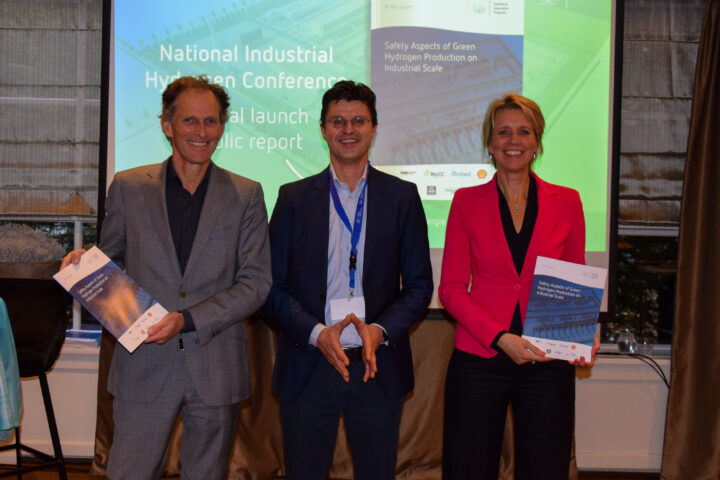
Also interesting to read
- Samenwerking bevordert veiligheid in de hele waterstofketen – interview met Hans van ‘t Noordende en Carol Xiao (avaiable both in Dutch and Englisch)
- Safety first: New report sheds light on industrial-scale green hydrogen safety
- Ammonia as a new key actor in energy- and material transition – A threefold story
Or join our LinkedIn-community on hydrogen.
Financing and investments in hydrogen
The afternoon continues with a panel session on the opportunities and risks of financial investments in hydrogen. “The EU is lagging behind the Middle East and Asia in electrolysis project scale”, says Nicole Vermeulen, CIO of Hy24 investment fund. We aim for large, but the path to get to the Gigawatt scale will go through scaling up. Projects on a smaller scale are the first step on our learning curve. It is an important step, but profitability may prove challenging. If we manage to grow through the steep learning curve towards larger plants, we may find that green hydrogen projects at various scales may flourish.
At the moment, however, it feels like a slowdown. The expectation was that 2023 would be the year of Green Hydrogen FIDs on the first larger 10’s to 100’s MW scale projects. Hyung-Ja de Zeeuw, executive director of Rabobank and hydrogen analyst, snaps us back to reality. “To my disappointment, no FID’s have been made yet, and I’m not expecting them this year anymore. We seem to be stuck in the final phase”. She adds that importing US blue H2/ammonia – of which the main feedstock, natural gas, is four times cheaper than its European counterpart – could accelerate our energy transition. Ed Buddenbaum, program manager at GroenvermogenNL, states that there is a significant price gap between green and grey H2.
Afkenel Schipstra, Head of Hydrogen Uniper Benelux, also mentions high costs. “Grid connection fees have risen by 700% over the last five years”, she says. Ed Buddenbaum recommends bridging price gaps with subsidies. “We should facilitate financing by banks and investment funds by spreading risks throughout the whole value chain”, he adds.
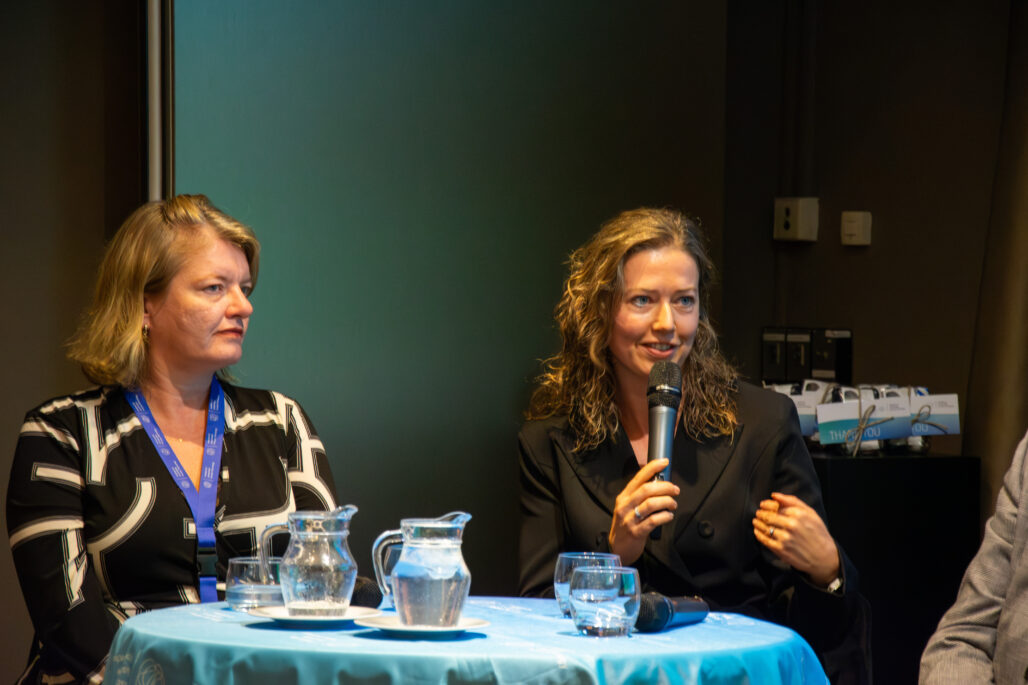
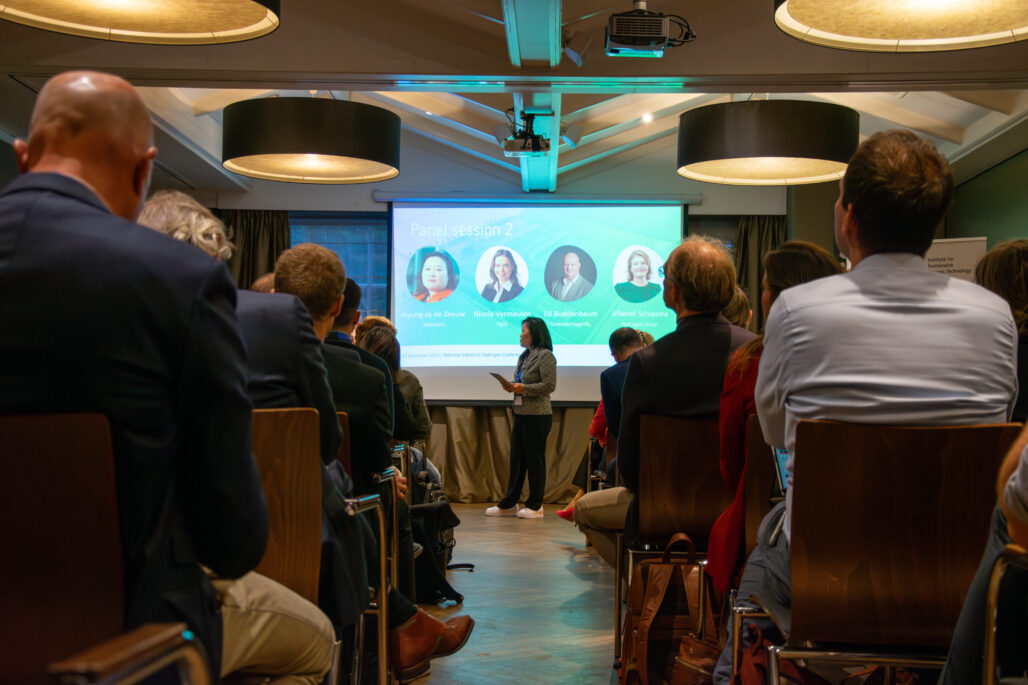

The way forward
The picture that emerges is a complex one. Green hydrogen technology is still in its early stages, and achieving true competitiveness will necessitate significant investments. Companies and financiers are standing on the brink of the green hydrogen transition, but various risk factors – safety, technical, regulatory, investment climate, infrastructure, and high energy costs – are making it difficult to make the final jump. And we need to learn from good examples. The Swedish H2GreenSteel initiative shows that when the entire end-to-end supply chain is involved, large-scale green hydrogen-based industry projects can be viable in Europe. To build on these learnings, the government could provide the final push by mitigating investment risks, introducing a strong, reliable green industrial policy, and keeping the door open to complementary blue and turquoise hydrogen. The hydrogen economy is within reach, but there is still much work to do.
A joint public-private partnership
Collaboration is key to move hydrogen in the Netherlands forward. It prompted Andreas ten Cate (Program Director ISPT) to suggest: “You would almost think of a joint public-private partnership in which the government helps to manage risks along the value chain of green hydrogen and, in particular, secure investments by keeping the cost-of-capital in this capex-intensive industry low and contribute to working with all other factors (permits, regulations, etc) to drive the learning curve and build the hydrogen economy – together.”
This is where ISPT steps in. The hydrogen transition is still in its early stages, requiring collaborative efforts and innovation. By working together, we can accelerate the transition and find real solutions to have more impact. Joining us means access to knowledge and people. We share costs and risks, and you’ll take the know-how back home to accelerate the growth of your own organisation. We’re up for the challenge!
For more information contact Marleen Roozen, Program Officer for the Hydrogen Innovation Program.
